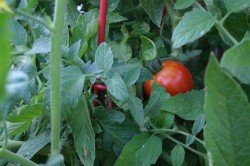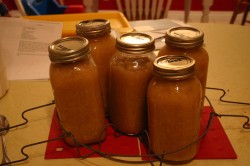Week 37: BEANS Dry bean, peas, legumes, 100 lbs per person.
WHAT TYPES OF BEANS CAN I STORE IN MY LONG TERM FOOD STORAGE?
There are all types of beans. My favorites to have on hand are: White, Black, Kidney, and Pinto beans.
WHY SHOULD I STORE BEANS IN MY LONG TERM FOOD STORAGE?
Beans give you a lot of bang for your buck. They are low in cost, cholesterol free, low in fat, and high in fiber, protein, carbohydrate, folate, and many trace minerals. In fact, because they are high in fiber and low in fat, they can actually help lower your cholesterol. And my favorite-now brace yourself-you can actually use these as a fat substitute which will really come in handy.
WHERE SHOULD I STORE MY BEANS?
Store it in a cool, dry area. Unopened it will store for 30+ years. Opened, it will last a couple of years.
HOW MANY BEANS SHOULD I HAVE IN MY LONG-TERM FOOD STORAGE?
For a one year supply, you need about 60 pounds of dried beans or legumes per person per year, or about 5 pounds per month.
WHICH TYPES OF BEANS AND HOW MUCH OF EACH SHOULD I HAVE IN MY LONG-TERM FOOD STORAGE?
It depends on your preferences, and what you would use. But I store more white beans (they work the best in baked goods), followed by black beans (we like Mexican food), and then equal amounts of pinto and kidney beans.
WHERE CAN I PURCHASE BEANS FOR MY FOOD STORAGE?
If you want to save a little money, you can visit your local LDS Cannery and can it yourself. Or, you can purchase a case of PINTO beans online already canned through
LDS Distribution Services Online. Unfortunately, you can’t purchase white or black beans online through LDS Distribution Services Online-but it IS available at LDS Canneries.
(Taken from everydayfoodstorage.net)
Key Points
- Beans, peas and lentils are the richest source of vegetable protein and are a good source of both soluble and insoluble dietary fiber.
- Utilizing dried beans and soaking them overnight is the best way to get the true bean flavor and a smooth texture
- When legumes are eaten with grains, nuts or seeds, a complete protein can be formed which can suitably replace meat, fish, poultry, eggs or dairy.
- Legumes aren’t just used for soups. Some other uses are:
- Grind into bean flour for white sauces
- Mash up cooked beans to replace butter/oil in recipes
- Grow into sprouts for a fresh “vegetable”
- One easy way to start using dried beans is to use them in place of canned beans in your normal recipes (see conversion chart below)
- Generally, legumes will keep indefinitely when stored in a cool, dry place.
- Determine the quantities of each food item you will need to store. For more information, see BabyStep 4.
Helpful Hints
Here is a basic summary of Do’s and Don’ts.
BEAN DO’S:
- Store dry beans in a cool, dry place.
- Lightly rinse packaged dry beans; sort through them and remove any pebbles, seed pods, leaves or twigs.
- Soak your beans! It reduces cooking time by about one half, and saves vitamins, minerals and proteins which can be lost during prolonged heating — exceptions are lentils, split peas and black-eyed peas which may be cooked from their dry state.
- Soak beans in plenty of water. Use a 3:1 or 4:1 ratio of water to beans (seechart for soaking times).
- Place presoaked beans in a pot and cover with fresh, cold water. Bring to a boil, reduce heat, partially cover and simmer them for the indicated length of time until they are soft and tender.
BEAN DON’TS:
- Store dry beans in the refrigerator.
- Add baking soda to hasten soaking or cooking time as it will decrease the nutritional content of the beans.
- Add salt or any product high in calcium, magnesium or acid to the soaking or cooking water or beans will not soften (products with these elements should be added to cooking water or any recipe calling for partially cooked beans only after beans have reached desired tenderness).
- Use microwave to cook dry beans – microwaving is fine for reheating beans that are already cooked, but dry beans need to be simmered slowly in lots of water to soften, tenderize and rehydrate properly.
Lentils
- Lentils have a high nutritional value, second only to soy beans in protein content.
- The lentil is a cousin of the bean and is used as an additive in soups/chilis.
- There is no need to soak lentils.
Dry Soy Beans
- Dry soy beans provide an excellent source of protein.
- They are light tan or yellow in color.
- Standard soaking methods apply.
Dry Split Peas
- Types include yellow and green. Yellow split peas have a milder flavor and are good to use when you want to hide the richer, green pea flavor.
- Dry split peas are most commonly used in thick soups and stews.
- There is no need to soak split peas.
Dry Beans
- There are a large variety of dry beans, some include black, red, pinto, kidney, garbanzo
- Dry beans are very versatile. Store the varieties that your family normally eats.
- In general the larger the bean the longer they need to soak; and the longer you soak beans, the faster they cook.
Dry Lima Beans
- The lima bean, also known as the chad bean or butter bean, is a large disk-shaped bean. Lima beans originated in Peru and have been grown there since 6000 B.C. The name comes from the capital city of Peru, Lima.
- Lima beans make a great side dish flavored with butter and salt.
- Standard soaking methods apply.
(taken from foodstoragemadeasy.com)
Enjoy your week!



